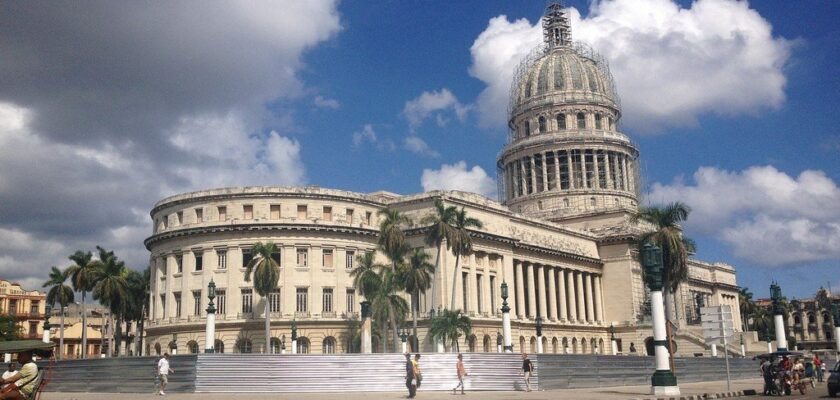Capitol in Havana (El Capitolio)
The Capitol in Havana is one of the most famous structures in the capital of the Republic of Cuba and a popular tourist attraction. Located on Prado Boulevard, it is among the most impressive buildings in all of Latin America. Externally, the building is very similar to the famous Washington Capitol, where the U.S. Congress sits, and also bears a resemblance to St. Peter’s Cathedral in the Vatican. However, Havana’s Capitol is distinctive in its own way, making it a truly unique and one-of-a-kind facility.
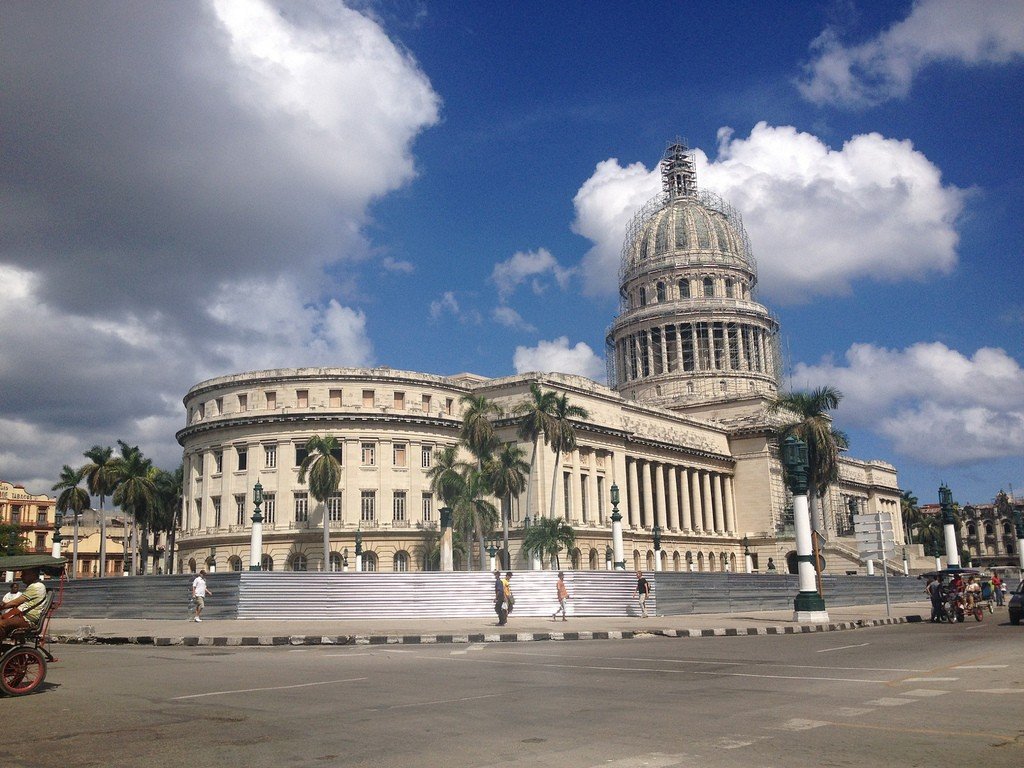
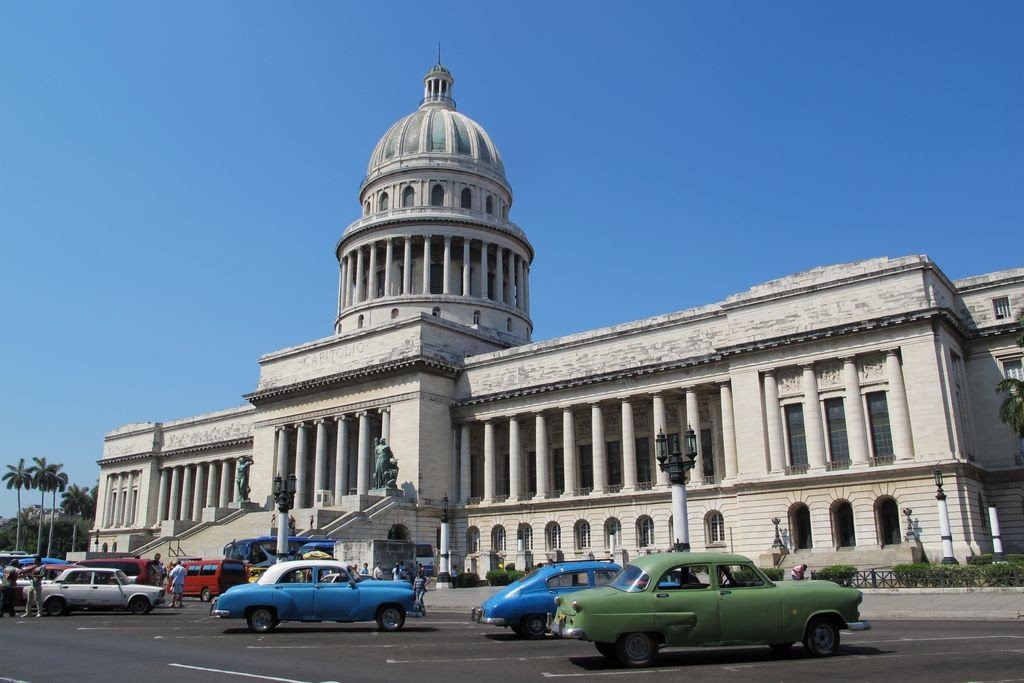
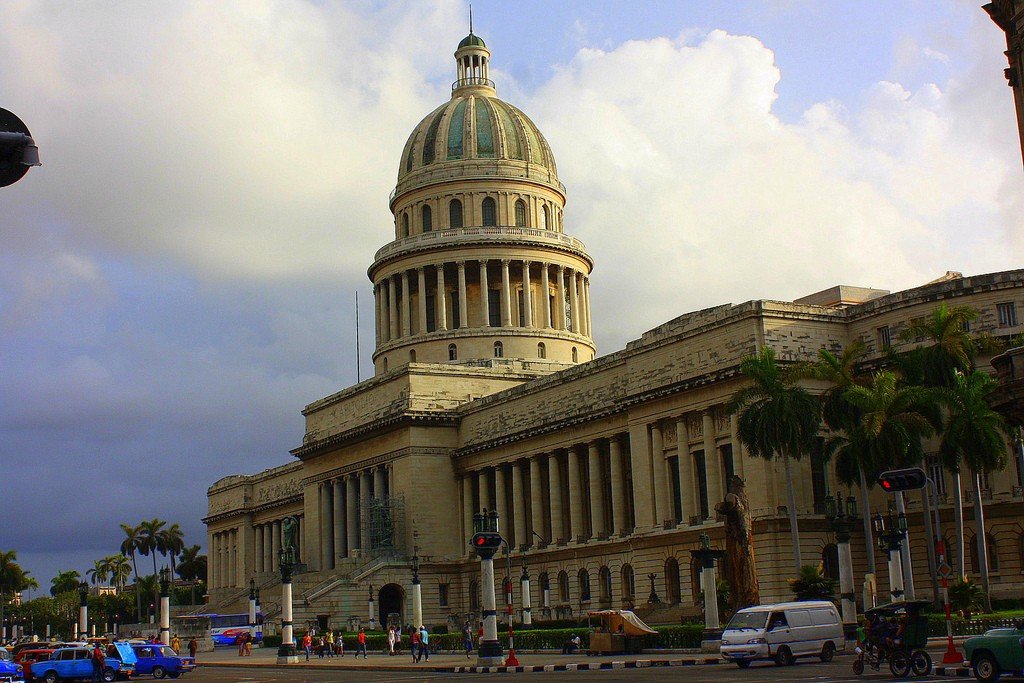
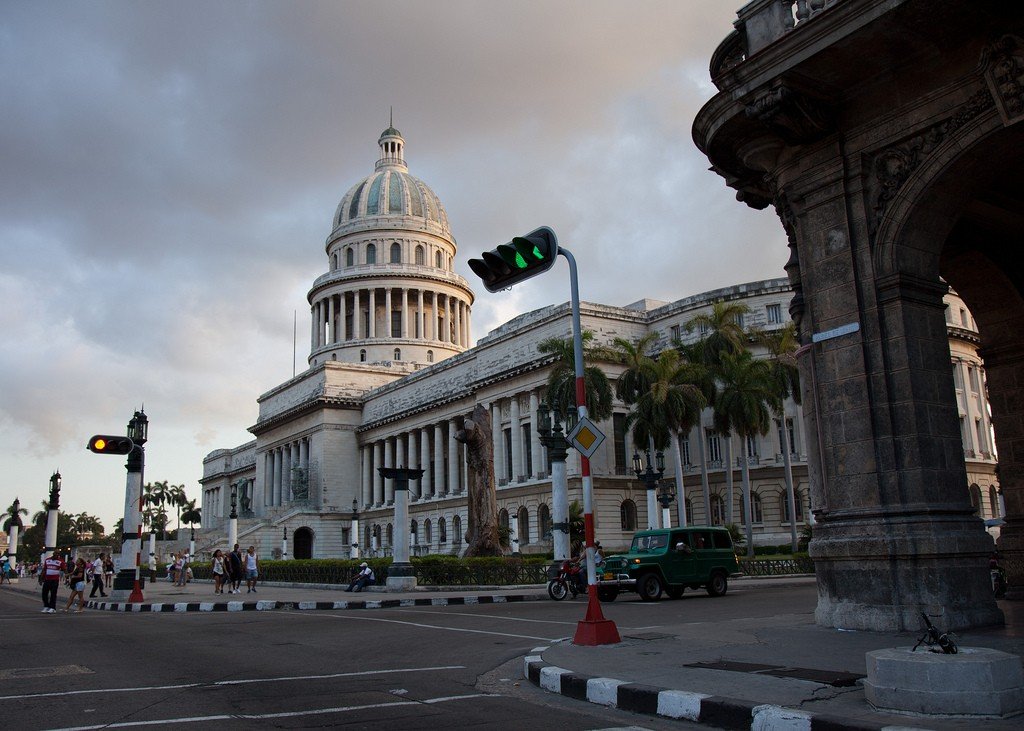
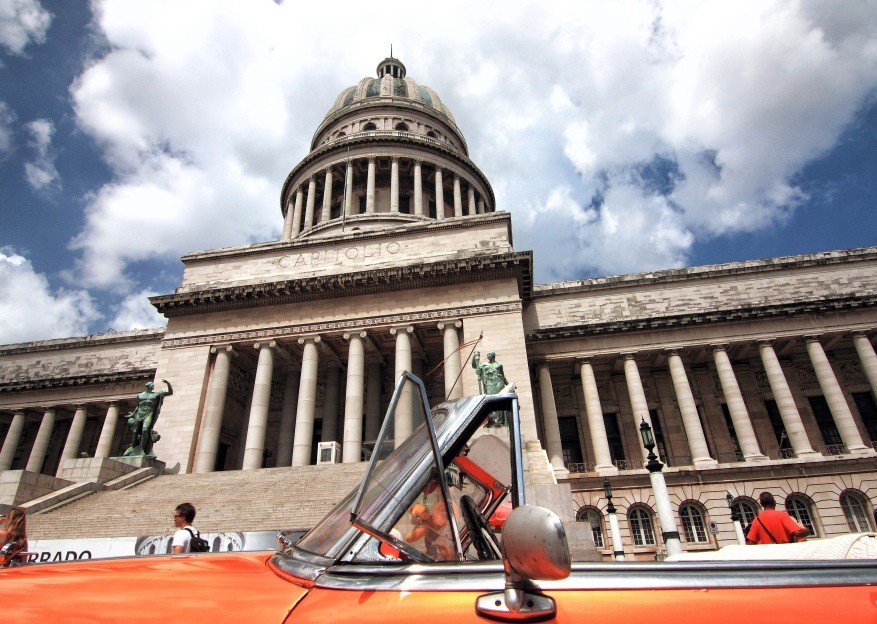
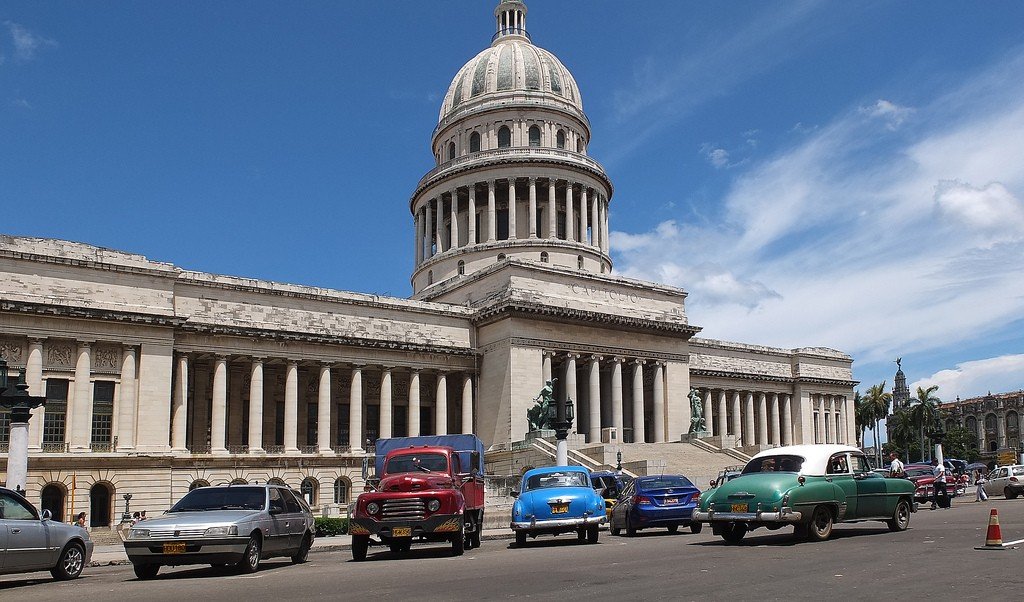
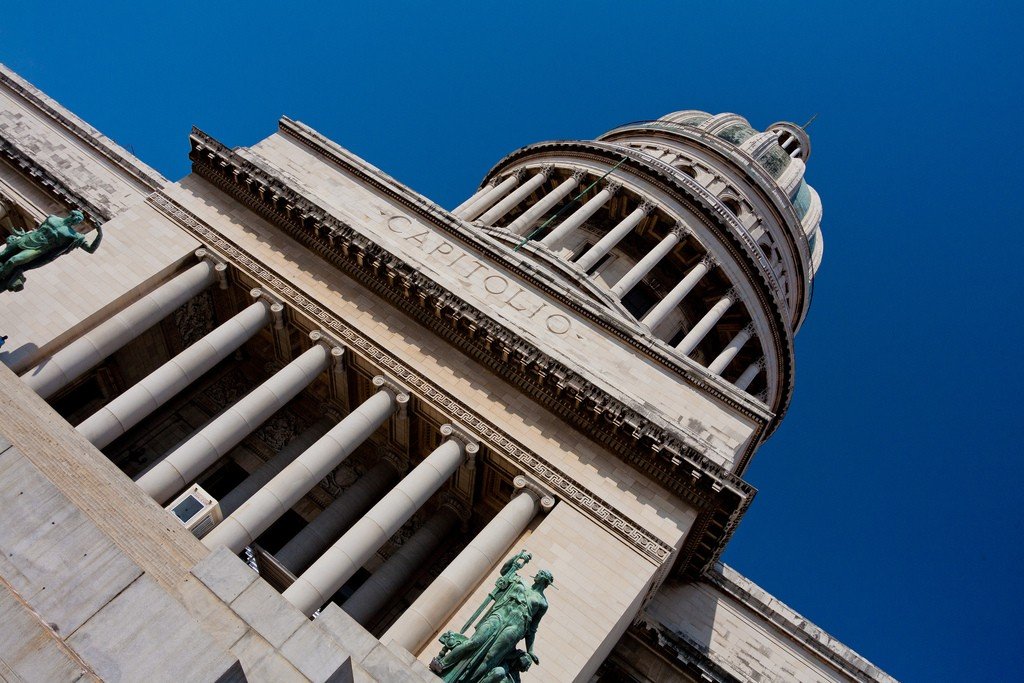
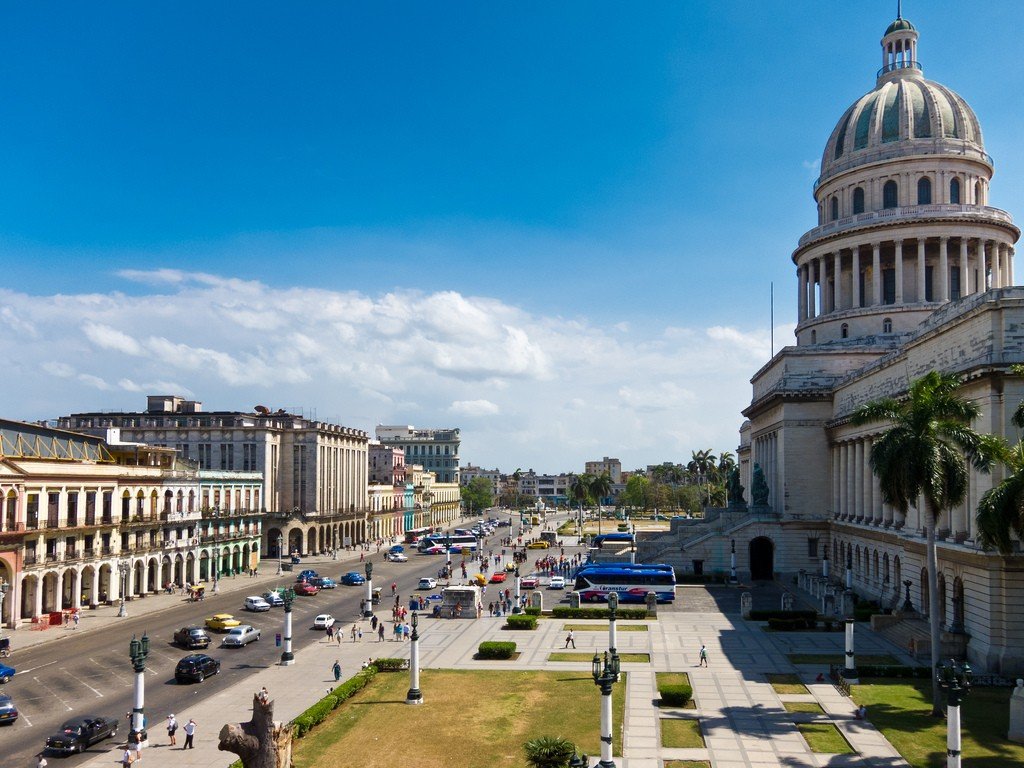
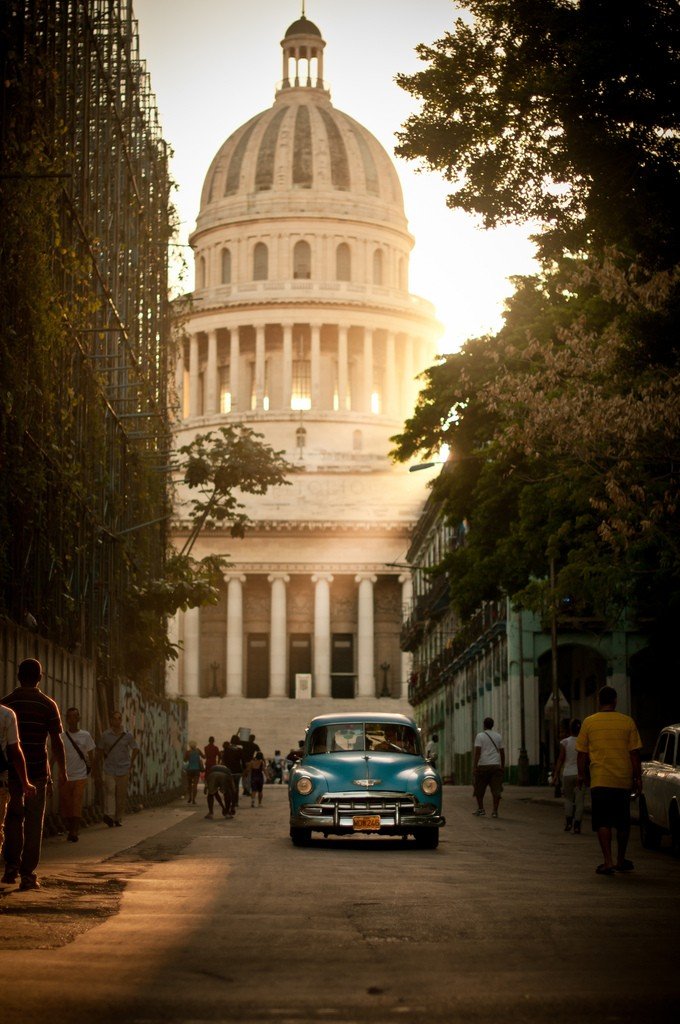
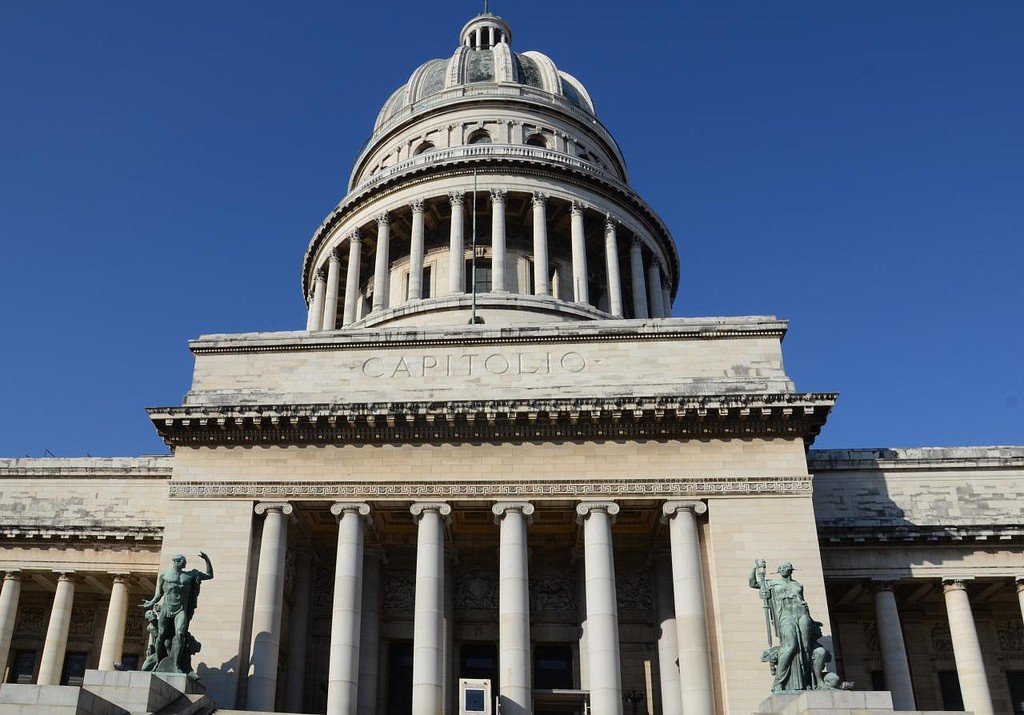
Highlights
Visitors to the Island of Liberty and its sunny capital, spread out on the Gulf of Mexico, enjoy getting acquainted with this magnificent monument of Renaissance architecture: a visit to the Capitol is included in all excursion programs in Havana. The huge grand staircase lined with granite, the beauty and luxury of the interior and the gold-covered dome of the central building – all this can impress anyone. Despite the fact that in 2015 the Capitol in Havana was closed for reconstruction, the interest in this attraction does not become less.
.From the history of the Capitol
During the Spanish colonial rule, the area was a swampy area with creepy shanties scattered about, housing slaves. Sometime later, in 1817, a botanical garden was established here, which lasted until the Capitol was built.
.
Construction of the Cuban equivalent of the building on Capitol Hill in Washington, D.C., began on April 1, 1926. The work was led by the famous architect Eugenio Rainieri Piedra. Less than three years later, the facility was commissioned, and the National Assembly, the parliament of Cuba, began to meet there.
.
The opening took place on May 20, 1929, during the celebrations for the Independence Day of this Caribbean island from Spain. The then Cuban dictator Gerardo Machado did not hide his satisfaction: Havana’s Capitol turned out to be even bigger than Washington’s and very similar to the latter.
.It is known that E. Piedra did not set himself the task of building an exact copy of the American “counterpart”. If you look closely, in the appearance of the Capitol can be found features, for example, the Pantheon in Paris. But one thing is clear: the architecture of this building in the Cuban capital is typical of monumental buildings of the Renaissance and, above all, temples in the style of the Italian Renaissance.
.On January 1, 1959, the socialist revolution led by Fidel Castro won in the Island of Liberty. Since the parliament building in Havana had been built before the revolution, the new government saw it as a symbol of the former regime. Parliament was relocated from here, and eventually a convention center opened in the Capitol. Its premises are now also occupied by the Cuban Ministry of Science, a historical museum and a library.
.Features of the architecture
The first thing a visitor to the Capitol in Havana sees are the massive bronze doors decorated with bas-reliefs on historical themes, from the discovery of Cuba by Christopher Columbus in 1492 to before the building was constructed. They were made by the Italian sculptor Angelo Zanelli. He is also the author of the six Doric columns and two sculptures that symbolize Work and the Guardian of Virtue.
Inside the building is an 11-meter sculpture of a woman covered in gold leaf and weighing almost 50 tons. She allegorizes the Cuban Revolution of 1959. The bronze “señora,” sculpted by the same master, holds a pike and shield. The sculpture is located in a semi-circular niche of the hall, which has the unusual name “Salon of Lost Footsteps.”
The Capitol in Havana has six floors, the last of which only allows access to part of its famous dome, also covered in gold and illuminated by floodlights at night. The dome is crowned by a sculpture that is an exact copy of the bronze statue of Mercury in the Bargello Palace in Florence, created in the 16th century..
On the sides of the central part of the building are two more, semicircular, which before the Revolution housed the Senate of the Republic and the House of Representatives. Both buildings are decorated with 10 stone columns, artistically decorated, each with its own semantic meaning. Around the Capitol is an unusually beautiful garden with monuments to the heroes of the revolution, which was created by the famous French architect Jean-Claude Nicolas Forestier.
.
Another decoration of the Capitol in Havana was a 25-carat diamond. It is valuable not only in itself, but also from a historical point of view – after all, the jewel belonged to the last Russian Tsar Nicholas II. The diamond was brought to the Cuban capital by a Turkish jeweler who purchased it in Paris. The relic was placed under the dome and protected with impenetrable glass. From that moment the diamond became a symbolic marker of the zero kilometer, from which the counting of all distances in Cuba begins. However, on March 25, 1946, it was stolen, but less than a year later it was found and returned to its place. In order not to take any more risks, the diamond was replaced with a copy in 1973. The original is kept in the vault of the country’s Central Bank.
.Interesting facts
- The cost of building the Capitol totaled $17 million dollars – a fabulous amount of money for the poor Cuba at the time. The construction involved 8,000 specialists, 38,000 cubic meters of sand, 40,000 cubic meters of stones, 150,000 bags of cement, 2,000 tons of iron bars and 3,500 tons of structural steel.”
- The height of the Capitol from the base to the top of the dome is 91.73 meters. By this indicator it is second only to the cathedrals of St. Peter’s in the Vatican and St. Paul’s in London. .
- The prototype and model for the statue symbolizing free Cuba was Havana resident Lili Valty. .
- Until 1958, the building was considered the tallest in the Cuban capital, now the palm of superiority belongs to the five-star Havana Libre Hotel.
